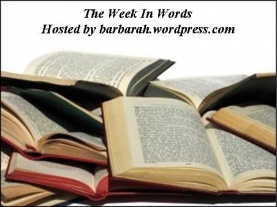Leigh arrives home from work one day, vaguely annoyed to find that the recycling can had been overturned and no one had bothered to pick it up. Then she walks into the living room, where her family waits. There was an accident, her husband informs her. Kara was driving. A girl is dead.
They’d tried to call Leigh, but she hadn’t answered. There wasn’t time to try again. He had to comfort their daughter.
The tragedy brings the strained relationship between mother and daughter into sharp relief. Kara turns to Gary, rebuffs Leigh’s attempts at sympathy.
The tragedy brings out the strained relationship between Gary and their precocious son. It tests Leigh and Gary’s marriage. It tests Leigh’s friendship with her best friend, with her community.
It makes Leigh wonder how she managed to get here–alienated from her daughter when she’d tried so hard to be a good mother, to give her daughter everything she hadn’t gotten from her own mother.
The Rest of Her Life is an introspective work, exploring Leigh’s past and present, digging into her thoughts about her marriage, her family, her friendships, her standing in the community.
This was a wonderful book with so many positive qualities that I find it hard to just give a general impression. There are so many things to like, so many things to mention.
I’ll begin with technicalities. I love that Leigh’s story is told in past-tense third person subjective. This point of view is an integral part of the story–and is a breath of fresh air after the spate of first person novels inundating the female marketplace.
The author has an M.A. in Creative Writing, but unlike many an academic artist, she doesn’t try too hard to be groundbreaking with her style. This is a book that follows the conventions of the English language, with capitalization and punctuation exactly where they should be, letting you get on with the story instead of worrying about misunderstanding meaning in the midst of the hodgepodge of “creative” effects.
And what a story it is. Moriarty demonstrates a keen insight into human relationships, teasing out the complexities of Leigh’s relationship with her daughter, her husband, her son, her best friend, her sister, her own mother, the mother of the dead girl.
In Leigh, we see a mother who tries hard to be the mother her mother never was–and who doesn’t understand why her daughter doesn’t appreciate that. We see a mother frustrated because she can’t seem to connect with her teenage daughter, a woman who learns to put aside herself in order to relate to her daughter.
In Leigh and Gary’s marriage, we see a couple who works hard to stay married. We see misunderstandings, frustrations, and accusations–and a choice to keep at it despite all that. I loved that Gary and Leigh’s marriage is neither sensationally awful nor saccharinely good. It’s honest, a rare trait in novels depicting marriage.
I can identify a lot with Leigh, despite our many differences (Let me count the ways…I’m not married, not a mother, not middle aged, not a teacher, not secular, not a product of a broken home…) Leigh is something of a loner, holding herself aloof from many around her. She is compassionate, but often doesn’t know how to express her compassion. Should she write a note, go to the dead girl’s funeral, put her hand on her daughter’s knee in sympathy? She simultaneously enjoys and dreads the gossip her best friend shares with her. She wants to do everything right, has a vision of how her life should look–but finds herself acting and her life looking differently than she’d envisioned.
Leigh is a sympathetic character. Her relationships are real and complex–not just dramatic episodes but full of subtle expectations, longings, comfortability, and differences. Leigh grows, learns, develops through her experiences. The relationships grow through their experiences.
This is novel-craft at its finest.
Rating:5 Stars
Category:General Fiction
Synopsis:When Leigh’s daughter accidentally kills a pedestrian and turns to her dad instead of Leigh for sympathy, Leigh is forced into an introspective review of her relationships with her children, her husband, and her best friends.
Recommendation: Wow. This is a truly good book. I definitely recommend it.

 The good news is that the majority of the information found within this book is accurate. “The Official Book of the Focus on the Family Physician’s Resource Council, USA” contains standard, low-hype information about food and nutrition. While there were a few unclear statements and a few answers that missed the main point, most of this book is scientifically sound.
The good news is that the majority of the information found within this book is accurate. “The Official Book of the Focus on the Family Physician’s Resource Council, USA” contains standard, low-hype information about food and nutrition. While there were a few unclear statements and a few answers that missed the main point, most of this book is scientifically sound.







